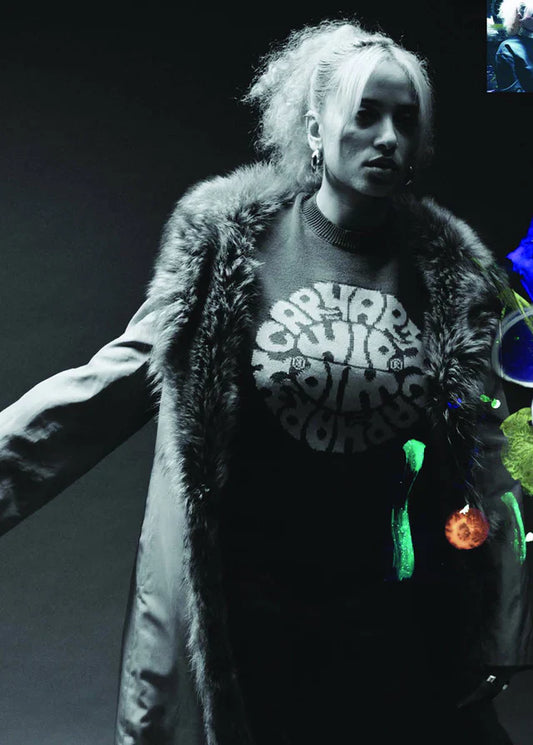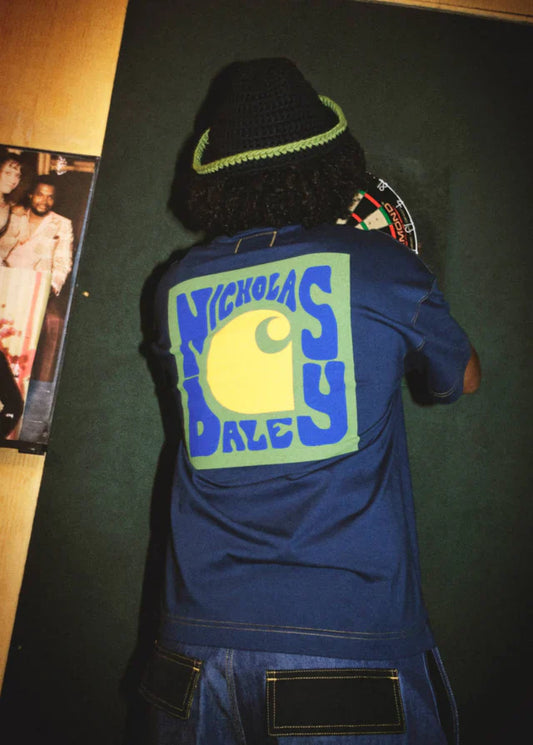
Injuries are inevitable in skateboarding, regardless of skill level. Dealing with these injuries and access to rehab programs, however, is rarely discussed. For the latest issue of WIP magazine, Writer Ben Powell explores the trials, tribulations, and taboos that surround getting injured – and just how exactly you come back from it.
Words: Ben Powell
Images courtesy of the Carhartt WIP skate team.

The thing skaters tend not to talk about when it comes to skateboarding, is that it hurts. A lot.
Every skateboarder on the planet knows this only too well: you will fall and you will do it often. Failure and pain are embedded in the process of learning, and slamming is as fundamental to being a skateboarder as anything else. Skill level is immaterial: pros and beginners all slam and they will slam regularly. But, the painful side of skateboarding has lessons to impart.
Maybe skaters downplay this part because damaging yourself in the pursuit of fulfillment casts a dark shadow over a culture which has finally found mainstream acceptance. Or maybe, it’s because skateboarding has always struggled to talk about, and deal with, injury in a practical sense. Anybody who has suffered a major skate injury will be familiar with how dismissive mainstream healthcare’s responses tend to be. Even today, when skateboarding is considered an Olympic sport, sympathy or understanding remains in short supply. And, unless you have access to rehab programs run by professionals, who properly understand the dynamics of skateboarding and the ways this relates to the body, your recovery will be slower than it ought to be.


But things are slowly beginning to change, thanks to the likes of sponsored skater and physiotherapist Doctor Kyle Brown. Working out of a private practice in Santa Monica, California, Brown began his journey into the world of physical therapy after two decades riding for Thailand’s biggest skate brand, Preduce. “I hadn’t chased sponsorship at all, that fell into place after I moved to Bangkok for a year,” he says. “Even though I worked on filming video parts and took my progression as a skater seriously, I was well aware that I wasn’t going to become the next big thing or ‘make it’ in a top-tier, pro sense.”
Brown was already in university during this period and en-route to becoming a qualified physiotherapist, but the link between the two things didn’t occur to him at first. “I didn’t make it a professional goal to connect those two worlds until I was already deep into the physiotherapy world. Once that had happened, I realized that there was clearly a niche that I could really hone in on: treating skaters using what I’d learned.”
Acutely aware of the lack of available skate-specific physical therapy and rehab programs, except for the well-paid 1% of the community, Brown began to reach out and treat skaters, who now account for around 20% of his patients.
“There are definitely little trends,” he says. “A really good skater who needs to try a technical trick for two hours to land it or film it, is going to experience a pretty specific range of issues. Let’s say it’s springtime and they haven’t been skating that much, they end up with plantar fasciitis or achilles tendonitis. Then you have the people who are still jumping down stuff, they tend to end up with more traumatic injuries. You know, they’ll tear their ACL and have to get surgery.”
“Ankle and knee injuries are the most commonplace things I’m asked to help with,” he continues. “The one injury that I personally treat is where you not only tear the ligaments in the ankle, but also break the bone. That’s ligament damage plus a bone break and the consequent surgery, which leaves you with pins in the bone. It’s a two-stage process, because recovery from the surgical aspect has to occur before my role as a physiotherapist can even happen. Rehab from that injury takes a lot of strategic, intentional work to come back from.”
Historically, ankle and knee injuries have ended many skate careers prematurely. Powell-Peralta’s proto-street stuntman Frankie Hill stands as probably the most egregious example of what can happen from this lack of adequate rehabilitation access. A huge star in the late 80s and on track to become the first true ‘all street’ professional daredevil, a series of untreated and concurrent knee injuries forced Hill to retire just as his style of skateboarding began to take over the world. Had people like Brown been working at that point, we can only guess how much further Hill, and his influence, might have gone.


“There are now a handful of us who grew up skating and still actively skate who are working in this field, so hopefully within the next ten or 15 years the paradigm will change,” says Brown. “Skateboarding keeps growing, from the skate industry in a microcosmic sense through to the growth that Olympic inclusion will create. The medical side of that growth, supporting these, let’s call them ‘athletes’ for now, is way, way behind other sports and that needs to change. There are thousands of qualified physios who specialize in working with basketball players, or golfers or football players. We just don’t have that yet with skateboarding.
“Skaters are seeking physical therapy more often – not as much as they should, but definitely more often than they were. The shift I’m starting to see is that people are very focused on longevity now, they want to keep skating into their 50s and beyond. It used to be that if you sustained a big injury in your 30s then that was it. This new attitude towards taking the rehab process more seriously is paying off and we’re seeing people not only skating, but also skating at a highly progressive level into their late 40s. As yet, we don’t really know what the boundaries are.”
With access to strategic, skate-specific rehab protocols still a huge issue, Brown – along with his friend, the pro skater Walker Ryan – has set up an online subscription service, Old Friends Fitness. Offering videos, rehab pathways and clear instructions, Brown hopes that this endeavor will go some way towards filling the current void in skater-focused rehabilitation. “The best thing to do is to develop a very consistent but simple strengthening program,” he says. “To do that, you need to push your body against some kind of resistance a few times a week for 30 minutes to really prevent some of the common injuries that plague most skateboarders.
“It’s better to do this than to be reactive like most of us are: ‘Oh I’ve hurt my ankle, I better do some strengthening exercises.’ If you do resistance strengthening as a matter of course, it’ll help to prevent the injuries in the first place. I often say to skaters: whatever you’re doing in rehab after an injury, don’t stop doing it after you feel you’ve healed.”
Adopting this consistent and intentional approach also pays dividends when dealing with the mental health implications of long periods on the injury bench. “Just knowing that you’re rehabbing an injury and getting your body stronger is helpful for those dark months when you’re not able to skate,” says Brown. “I do think we need to do more to help out with the mental side of this, though. It’s a big deal for any skater in the midst of a career-defining video project to blow out their knee or ankle and be out for a year.”
There is always hope though. Brown is quick to add that he’s hard pressed to think of any injury he’s dealt with that was completely untreatable. “There are some injuries where you’re not going to come back 100%,” he says. “But with the vast majority of skate-related injuries, you can recover from them as long as you’re patient and you do what needs to be done. Every patient that I’ve seen has some chance of recovery, it just depends on how much they’re willing to put in.”
WIP magazine issue 08 is now available from Carhartt WIP stores and our online shop.

 Europe
Europe









